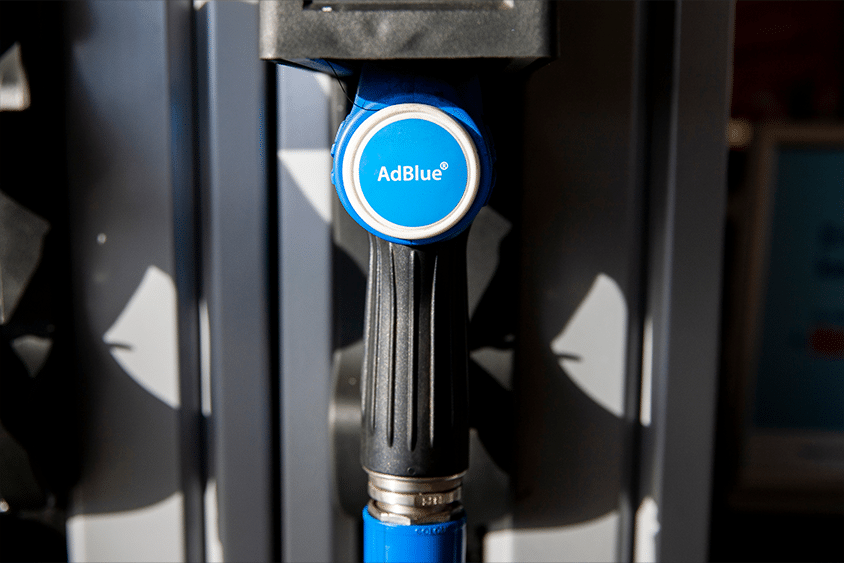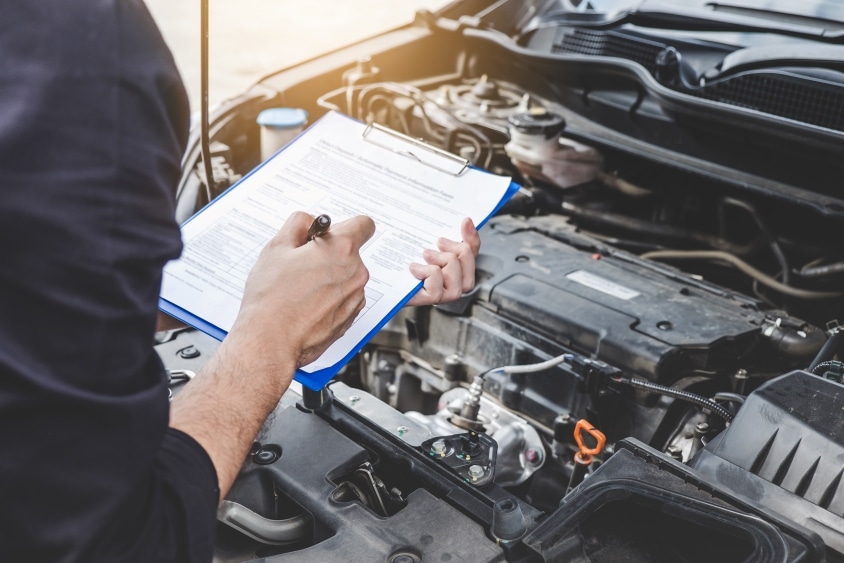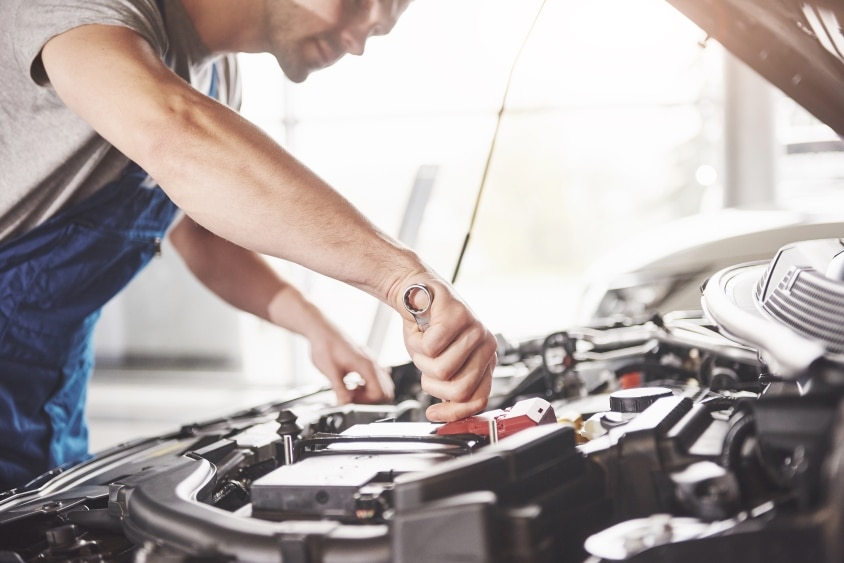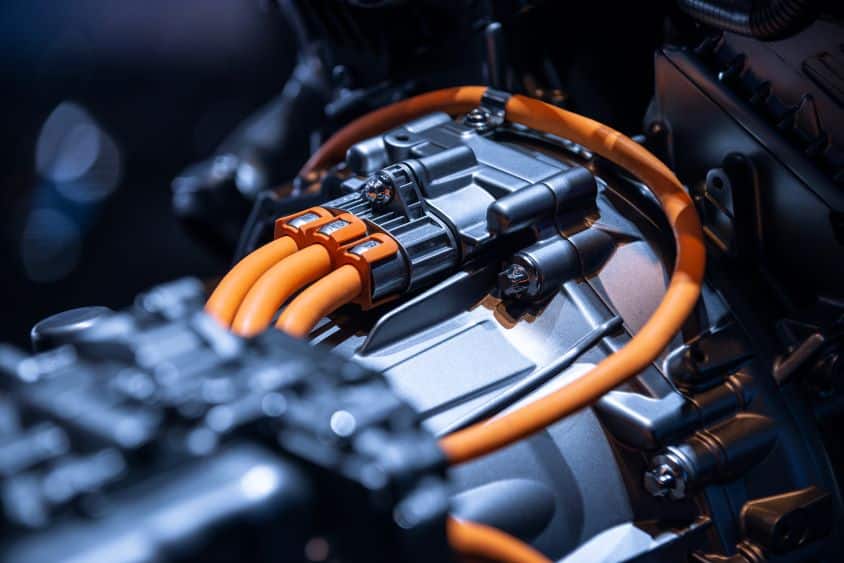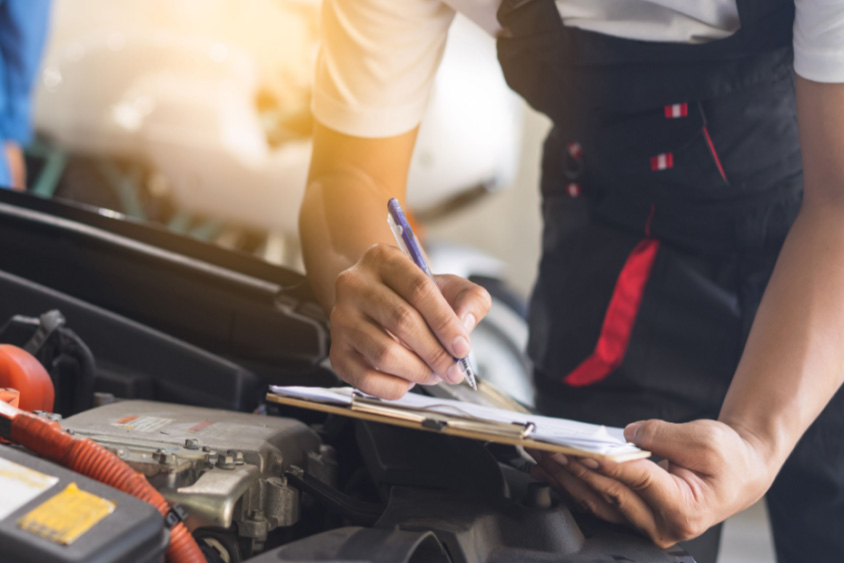The brand name Adblue is for an additive that is used to clean up diesel emissions through a process called selective catalytic reduction (SCR).
This solution of diesel exhaust fluid is a fairly new technology that can be used to treat exhaust gases and remove harmful pollutants. These can include Nitrogen Oxide (NOX) which includes the harmful nitrogen dioxide (NO2).
Adblue is a biodegradable, water-soluble and colourless liquid which has been used in commercial vehicles since 2002, with it most recently being used for diesel cars.
For it to work and the process to be successful, Adblue must be stored in the tank of the vehicle where it has a funnel that it can be poured into. It is important to remember that, unlike petrol or diesel, it is not injected into the engine, but instead through the vehicle exhaust where a chemical reaction causes harmless nitrogen and water to be emitted instead of harmful NOx exhaust gases
Why do we Need AdBlue?
Adblue became prevalent when responses to emission regulation were put in place by the EU to protect air quality and population health – by reducing harmful emissions.
Diesel cars that were registered after September 1, 2015, are required to emit a maximum of 80mg/km of NOx to become compliant – this will require you to check that AdBlue levels are maintained at all times.
When is a Top-up Needed?
A warning light in the cab will signal when a top-up is needed. You must listen to these warnings and act immediately to top up to the manufacturer’s recommended level.
Consumption and top-up levels can vary from one vehicle to another, they can also depend on driving style; Economical drivers are less likely to have to fill up AdBlue levels often. In general, diesel vehicles need a top-up every 3,000 to 4,000 miles, whilst other drivers claim they only need a top-up every 12,500 (fitting with the service interval of some, but not all, models.)
How Much AdBlue Does a Truck Use?
4-8% is the average use of AdBlue versus diesel for trucks with local distribution being an average and 500L per annum and national distribution being approximately 1,000L per annum.
Truck fleet drivers should work to maintain levels and top up every time they fill up on fuel.
Availability and AdBlue Cost
Usually available in 5,10 and 20L cans, 200L drums and 1000L intermediate bulk containers (referred to as IBCs) or via designated AdBlue dispensing systems.
Service stations usually have dispensing pumps. If none is available at the pump, portable containers can be bought at garages, filling stations or supermarkets. Prices begin at roughly £1 per litre if bought in small amounts, but you can reduce these costs if you run a large fleet and decide to buy in bulk.
Running Out of AdBlue
If AdBlue levels aren’t closely monitored and maintained, you may get into a situation where you’re running out of AdBlue, in these instances if the warning light is ignored and it runs out, the vehicle will lose power and not restart until replenished. Depending on the vehicle, the engine may or may not shut down, in other situations, engine performance will just be limited when AdBlue supplies are depleted.
If equipped with SCR technology your engine will reduce emissions according to current legal standards, this emission legislation only allows small amounts of NOx. If this level is exceeded then you may run the risk of illegal limits and be therefore liable for penalties.
If your vehicle has already shut down then there will be no permanent damage to the vehicle, but higher costs in terms of time and money will be involved. Time in the sense of having to have your vehicle recovered, and money in terms of the dealership having to reset and fill up the fleet vehicle at a cost. During this time, off-road costs will occur and the business will be one vehicle down until it is ready to go again.
To avoid the costs above, we advise drivers to keep a supply on board and to keep an eye on their vehicle’s warning light to monitor any depleting levels of AdBlue.
AdBlue Storage
When it comes to bulk storage there is a variety of storage and dispensing options. Some popular options include a 210-litre drum fitted with a hand-operated pump, right up to a 15,000-litre bulk tank fitted with overflow and spill alarms – with some options having telematic systems that place repeat orders when stock levels reach pre-determined minimums.
The volume of AdBlue consumed will determine which option is appropriate. An IBC holding 1,000 litres is a convenient option for storing and dispensing AdBlue for small fleets.
If AdBlue consumption exceeds one IBC per month, a storage tank investment is recommended. A typical tractor unit will consume AdBlue at the rate of 4-8% of diesel consumption.
When it comes to the storage of AdBlue, there are no specific regulations – although the Environmental Agency has issued a set of guidelines which can be accessed via their website.
They state that if AdBlue is stored correctly then it “poses minimal risk to operators and a limited risk to the environment.” Although the agency does add that AdBlue is “very polluting to surface water and groundwater” – due to this, there are guidelines if you have a spillage and fail to follow them – posing a risk to water sources. This takes place under the Anti-Pollution Works Regulations 1999 to issue a works notice forcing necessary improvements to be made.
AdBlue quality is extremely important as contamination can result in damage to your SCR catalyst or after treatment which increases harmful emissions.
You should avoid AdBlue contamination at all times.
- Do not let it come in contact with fuel, oil, water, dust, dirt, metals, detergent etc.
- Do not place anything inside the AdBlue container as this will compromise quality.
- Make sure the AdBlue is not mixed with diesel or any other liquids.
- Urea quality is important – do not try to mix your own AdBlue.
- If using jugs or vessels to transport AdBlue, make sure they are clean, as vessels used to carry diesel or oil could contaminate the mixture.
- Use dedicated AdBlue materials.
What do I do when I accidentally put AdBlue in my diesel tank?
In this situation DO NOT start your engine!
Depending on the amount of AdBlue used, you may damage your engine when starting it – first, you should empty and clean your tank. This includes draining the whole tank and discarding any leftover mixture.
This is due to even the slightest drop of diesel polluting the AdBlue in your tank. With this one drop of diesel has the potential to pollute up to 20 litres of AdBlue. Running your engine whilst this takes place will disrupt your SCR system.
To prevent further damage – contact your vehicle manufacturer or supplier as you may need to replace certain AdBlue components.
Finding Your Local Fuel Station With Fuel Card Services
Now you know the importance of AdBlue and how to use it safely, why not check out your AdBlue levels, using our useful pump locator app to check where your local fuel station is if you’re running low – your fleet vehicle will thank you for it!
Alternatively, if you still have some questions about AdBlue, why not contact our helpful team or if you want to read more advice and information from Fuel Card Services, visit our blog.

